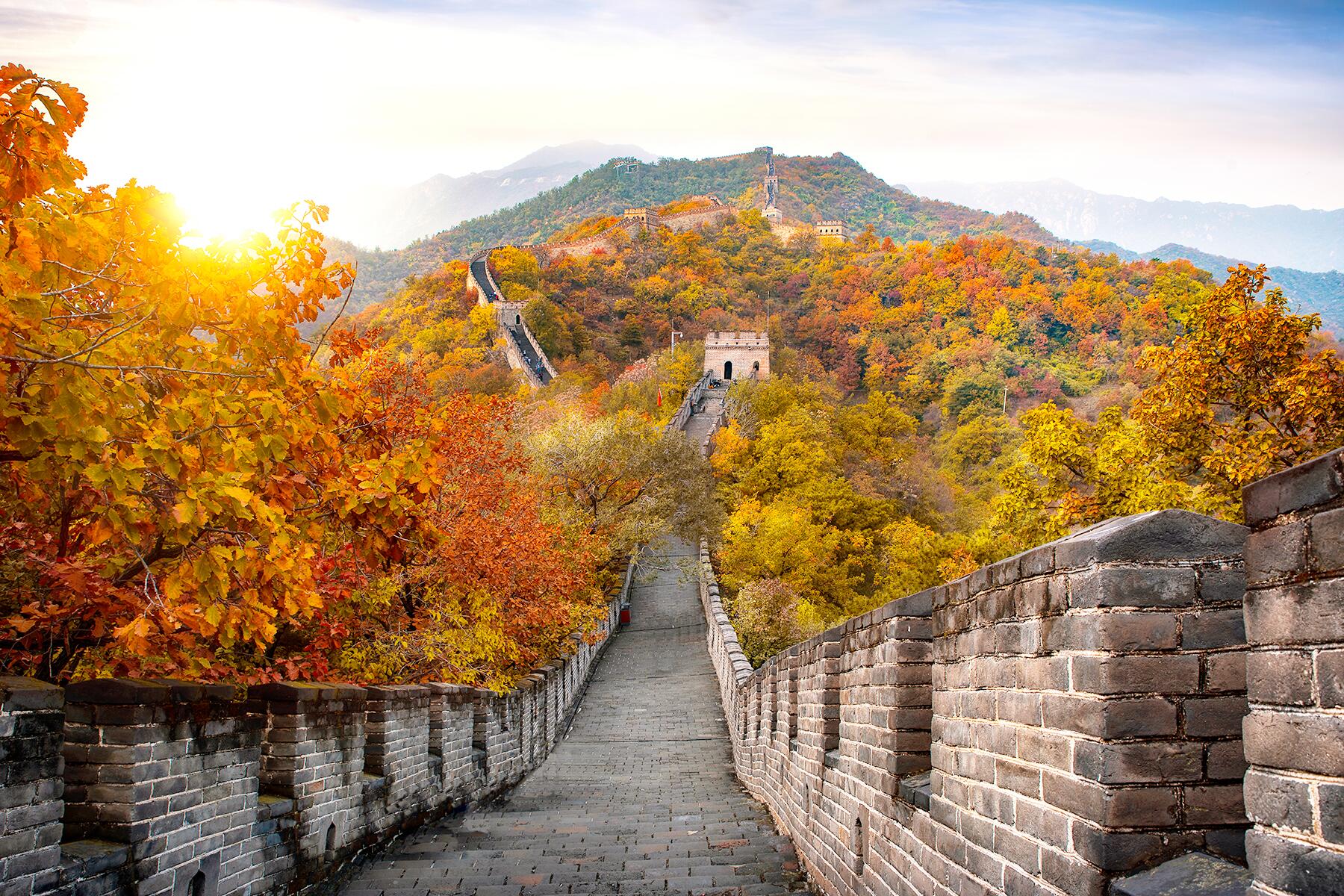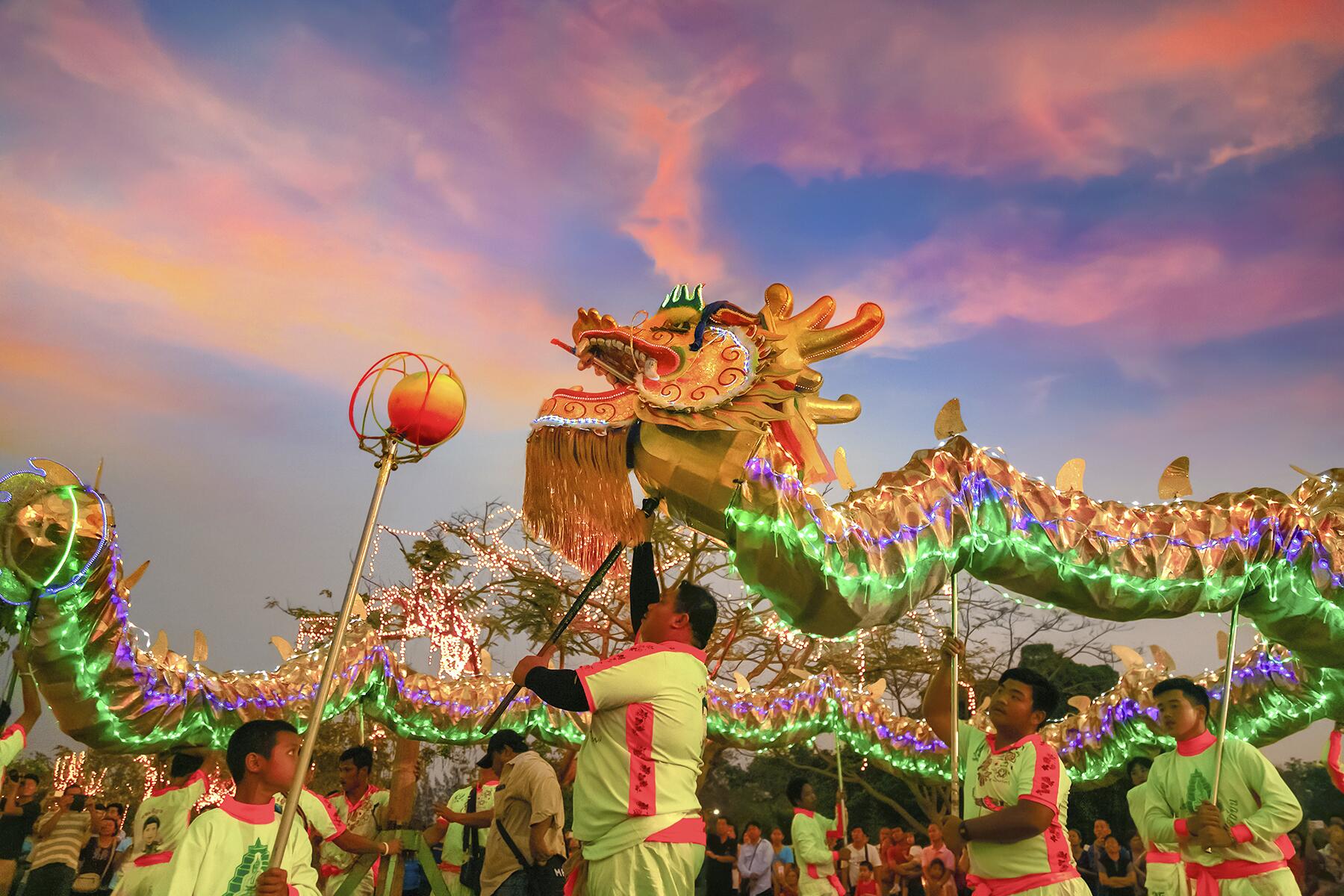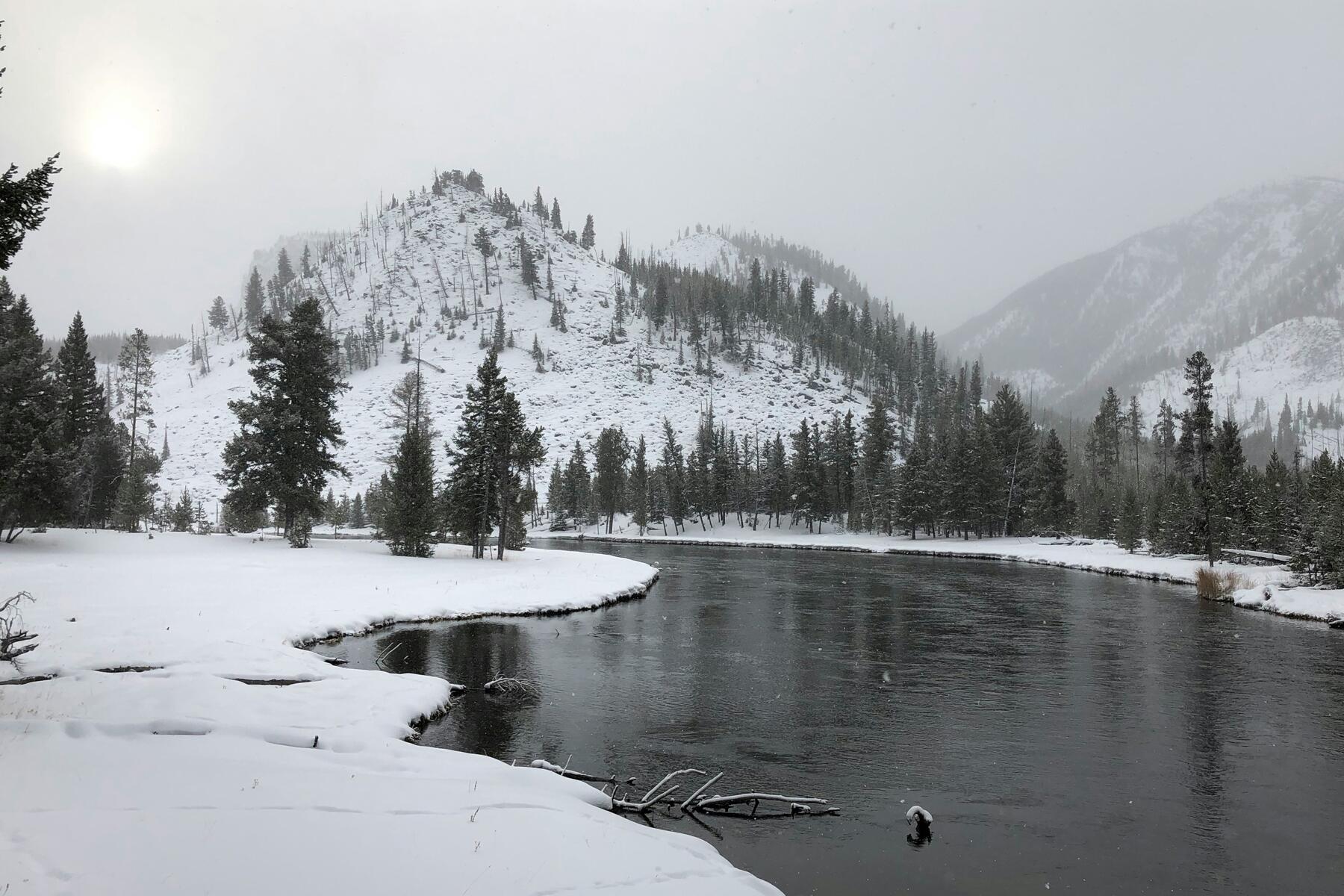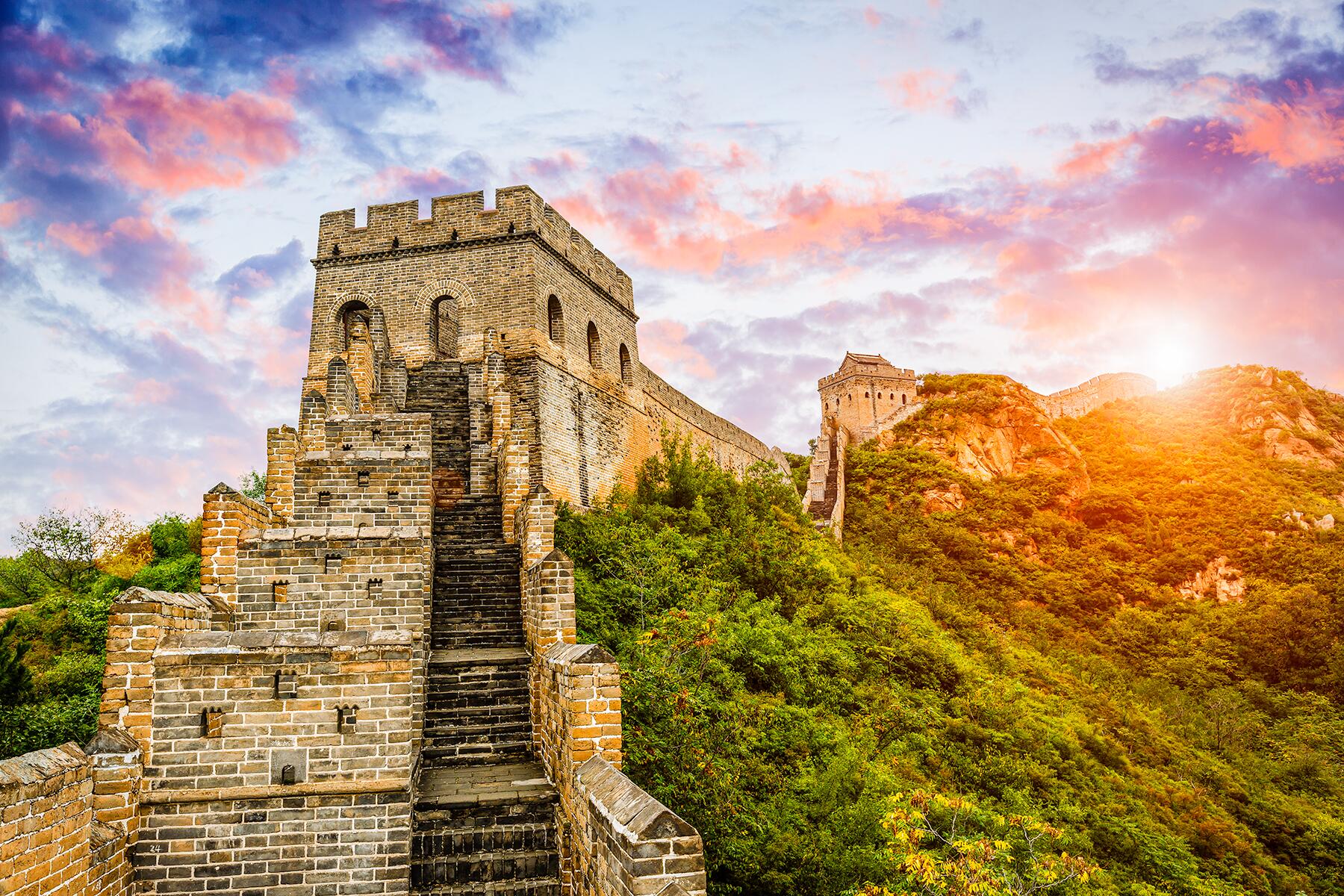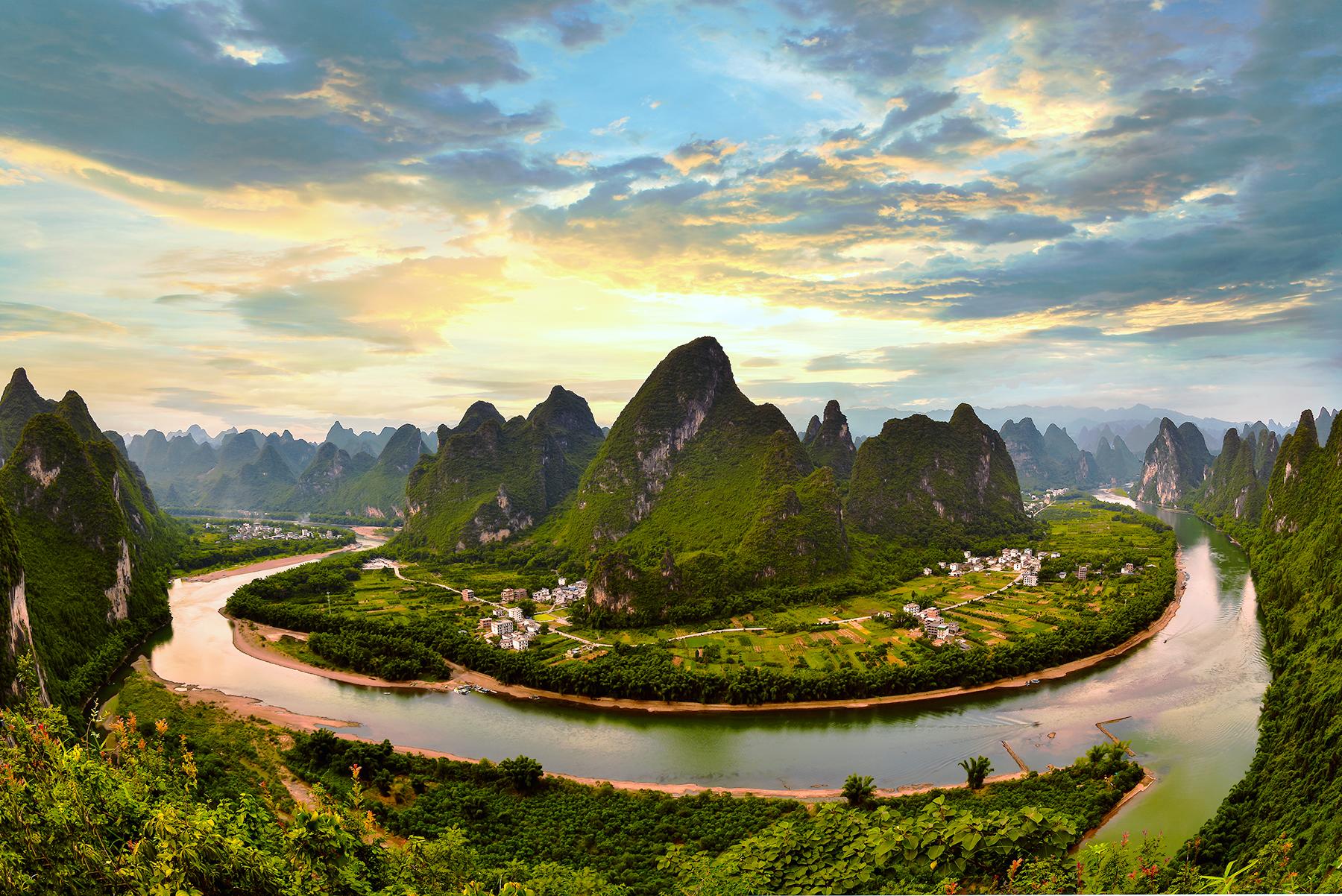From desert landscapes in the Northwest to awe-inspiring alpine peaks in the south, China’s wide variety of climates have created unique and breathtaking sights.
Below is a list of UNESCO World Heritage Sites, photogenic cloud forests, and flowering fields that are likely to awe anyone. Escape into the countryside of the most populous country on Earth and you might find yourself alone with some of Mother Nature’s most wonderful creations.
Top Picks for You
Yuanyang Rice Terraces
WHERE: Yunnan province
Located not far from the border of Vietnam, the rice fields of the ethnic minority villages of Yuanyang county are some of China’s most impressive sights. The swirling patterns and sparkling reflections on the waters of the fields look almost ethereal. Some fields are ideal for sunset photography, while others, like the Duoyishu rice terrace, are preferably viewed during sunrise. But regardless of the time of day, these man-made terraces are a wonder.
INSIDER TIPStay in a local homestay near the fields so you can arrive before dawn for your morning photo session. Stay for a few days in this region so you can experience a few sunrises and sunsets.
Longji Rice Terraces
WHERE: Guangxi province
Also known as the Dragon’s Backbone, this is another stunning set of rice fields in southern China. Some of these terraces extend uphill to over 3000 feet high, and the oldest terrace was built over 700 years ago. They were carved into the slopes by the Zhuang, Yao, Dong, and Miao ethnic minority groups. The Longji terraces are a little more popular than the ones in Yuanyang because of their close proximity to Guilin and Yangshuo, and make for a convenient overnight trip.
Recommended Fodor’s Video
Qinghai Lake
WHERE: Qinghai province
Located over 10,000 feet above sea level, Qinghai Hu, also known as Blue Lake, is China’s largest saltwater lake. It’s a major sight in its namesake province of Qinghai, in northwest China. This lake is also in the middle of many of the continent’s main bird migration paths. Some species of rare birds are still sighted here, along with the Przhevalsky horse, which is the only living subspecies of wild horse left in the world. Traditionally, Tibetan Buddhist’s from the surrounding regions of Mongolia have circled Qinghai Lake in its entirety as a form of pilgrimage. The most popular time for this is during the year of the horse, and the journey is done either on horse or on foot.
Huangshan
WHERE: Anhui province
Above a sea of clouds is Huangshan, or Mount Huang, in eastern China. Also known as the Yellow Mountain, it’s a designated UNESCO World Heritage Site and one of the most popular hiking spots in the country. The vistas of Huangshan are reminiscent of classic Chinese landscape paintings and have inspired poets and artists for centuries. The unique-looking granite peaks date back to the Mesozoic era and the mountain’s particular pine trees, named Huangshan pine, have survived by growing directly out of these rock formations, serving as a wonderful illustration of nature’s strength and agility.
INSIDER TIPHuangshan is known for being one of the best places in the country for green tea farming. Be sure to pick up some to bring back home.
Zhangjiajie National Park
WHERE: Hunan province
Exploring the Zhangjiajie National Park is like stepping into an ancient Chinese painting. At certain times of day, fog tumbles up and around the park’s pillar-like formations, giving it the ethereal visage that’s so common in the early Chinese artworks. The 3,000 pinnacles and spires of this Unesco-protected park are covered in dense vegetation. In fact, there are over 3,000 distinct plant species here, as well as diverse fauna, like the endangered Chinese giant salamander, the Chinese water deer, and the very rare clouded leopard.
INSIDER TIPVenturing out to the hiking paths and explore the rest of the national park after you’ve photographed the peaks. The park ticket is valid for two days, and there’s plenty of modest accommodation in the town of Wulingyuan, where you can relax and get a sense of local life.
Yangshuo
WHERE: Guangxi province
A mainstay of the backpacker circuit since the 1970s, the ancient village of Yangshuo is home to a sea of luscious green, lime-stone karst peaks. The sights here are so iconic that they were put on the back of China’s 20 Yuan note. The most famous karst is Moon Hill, named after the large hole through the center. Rock climbers and hikers come here for the amazing vistas at the top of the several trails that snake up the hill’s side.
INSIDER TIPSkip the city of Guilin and head straight to Yangshuo, where you can go on an eco-friendly bamboo raft ride down the Li River, past the famous karsts.
The Rapeseeds of Wuyuan County
WHERE: Jiangxi province
This sight in lesser-known Jiangxi province is particularly beautiful in the spring, when the flowers bloom and create what seems like endless fields of yellow. Rapeseeds are typically in their height of bloom from mid-March through the first few weeks of April, but the timing hinges on the weather and Mother Nature is fickle. Wuyuan County is unique from the other rapeseed sights in China thanks to the quaint villages that surround the fields. Most day trips or overnight trips involve a homestay in one of these villages and there’s an entrance fee for exploring the town.
Tiger Leaping Gorge
WHERE: Yunnan province
The jewel of Southwest China is also one of the best hikes in the entire country. It’s possible to spend several days exploring the well-marked trails along the northern side. Tiger Leaping Gorge is the deepest gorge of its kind in the world, with the Jinsha River winding its way through the bottom of the canyon. The highest peak is over 12,000 feet above sea level. Legend has it that hundreds of years ago a man chased a tiger through the gorge and to its narrowest point. To escape, the tiger leaped across to the other side, giving this beautiful canyon its name.
INSIDER TIPWhether on a lunch break or overnight stay, look out for the guest house that’s been said to have the most scenic toilet in the world, with perfect views of the gorge stretching out in front of you.
Shilin Stone Forest
WHERE: Yunnan province
This is the most popular sight in Yunnan province’s capital city of Kunming. Take a day-trip outside of the city and explore the Shilin Stone Forest, a huge national park that’s home to limestone rock formations that date back over two hundred million years. The shape of these peculiarly jagged karst peaks is the result of wind and water erosion over the years. The entire site is over 185 square miles and the two main sections of the forest that shouldn’t be missed are the Naigu Stone Forest and the Suogeyi Village.
Zhangye Danxia: China’s Rainbow Mountain
WHERE: Gansu province
The color palette spread across the striking rock formations in Zhangye Danxia National Geological Park is surreal, and probably the most colorful natural site in China. The red, yellow blue and pink hues are a result of over 24 million years of sandstone and other mineral deposits, layered like a cake on top of each other. The extraordinary shapes of the hills, pillars, and ravines were sculpted by wind, rain, and time. This Gansu province wonder became a UNESCO World Heritage Site in 2010.
One Hundred Mile Azalea Forest
WHERE: Guizhou province
Covering over 80 square miles, this surprising park is dedicated to white, pink, and red azalea blossoms. Located in the city of Bijie in southern China’s Guizhou province, there are more than 20 types of rhododendron blooms in existence here. It is the largest natural Azalea forest in the world. Trips here must be well-timed as the blooms only last for about three weeks.
Ten Thousand Peaks Forest
WHERE: Guizhou province
In addition to the massive caves networks, spectacular waterfalls, and miles of azalea blossoms, Guizhou province is also some of the country’s most impressive limestone karst peaks. Most of these fantastical hills are clustered together in Ten Thousand Peaks Forest. The cone-shaped hills are covered in vegetation and are a breathtaking backdrop to the valleys and local villages. The Ten Thousand Peaks Forest is part of a larger UNESCO World Heritage Site known as the South China Karst, which spreads across four provinces in southern China.
Shuanghe Cave
WHERE: Guizhou province
Recently crowned the longest cave in Asia and the sixth in the world, Shuanghe stretches over 145 miles. There are over 200 entrances with connecting cave chambers, waterfalls, and underground rivers, some of which are home to cave shrimp and blind fish. Guizhou province is still under the radar when it comes to tourism in China and it’s one of the most ethnically diverse provinces in the country and most people’s first language isn’t Mandarin. Intrepid explorers welcome!
Huangguoshu Waterfall National Park
WHERE: Guizhou province
Guizhou reveals even more of its natural splendor with Huangguoshu National Park, China’s biggest cluster of waterfalls and one of the country’s first national parks. At around 255 feet high, Huangguoshu Falls is the highest waterfall in China and one of the tallest in East Asia. There are 17 smaller waterfalls in the park, as well as Water-Curtain Cave, a 440 foot long, naturally formed cave located in the back of the Huangguoshhu falls. The park is an easy day trip from Guizhou’s capital city of Guiyang.
Meili Shan
WHERE: Yunnan province
The Meili mountains, in the remote region of north Yunnan province in Deqin county, is home to many varieties of animal and plant life. With its snowy mountain peaks in a subtropical region, it is known to be one of the most biodiverse parts of the world. The highest area of the mountain range, Kawagebo peak, stands at over 22,000 feet and is the highest point of the province. It’s considered a holy mountain to Tibetan Buddhists. Meili Shan is also the home to the Yunnan snub-nosed monkey, which is currently the world’s highest-dwelling non-human primate. The particular climate of this region makes it extremely sensitive to climate change.
Jiuzhaigou National Park
WHERE: Sichuan province
If you’re in China long enough, you’re bound to hear a local utter the word Jiuzhaigou more than once. A top sight in Sichuan province and one of the first national park’s in the country, Jiuzhaigou is arguably one of the prettiest natural wonders in all of China. Jiu means nine in Chinese, and the name literally translates as the “Valley of Nine Villages”, because of the nine Tibetan villages in the area. This UNESCO Heritage Site is home to a number of waterfalls, gardens, and plenty of natural beauty worth exploring for a couple of days. It’s a scene of turquoise lakes contrasted with layers of red, orange and yellow foliage—take one look and you’ll be booking a flight to western China in no time.
Three Parallel Rivers
WHERE: Yunnan province
Three major rivers in Asia—the Yangtze, the Mekong, and the Salween (which are known locally as the Jinsha, Lan Cang Jiang, and the Nu Jiang) all run parallel and in close proximity to one another in the northwestern region of China’s Yunnan province. All three rivers flow from north to south between deep gorges and mountains, including Meili Shan, with heights sometimes reaching over 20,000 feet. This part of the world on the eastern edge of the Himalayan mountain range is one of the most biodiverse temperate regions on Earth. The Three Parallel Rivers of Yunnan landscape has been named a UNESCO World Heritage SIte, protecting 15 areas of this region in total.
Mukeng Bamboo Forest
WHERE: Anhui province
Just beyond the gates of the Mukeng Bamboo Forest park entrance a field of tall, green bamboo trees. There’s a flagstone walking path that winds through the two-square-miles of lush forest, past some villages, lakes, and pavilions. Parts of the film Crouching Tiger, Hidden Dragon were filmed here. Not to be missed is Xiu Nu Lake, where the bamboo reflecting on the water turns the lake an emerald green.
Shapotou Sand Dunes
WHERE: Ningxia province
Just south of Mongolia, where the Tengger desert meets the Yellow River, are China’s Shapotou Sand Dunes. The area is officially called the Ningxia Hui autonomous region, which is home to some of the Chinese Muslim population. Shapotou is a great place to visit the country’s expansive sand dunes, and the Yellow River and mountains in the distance make it all the more dramatic. Shapotou also has the country’s longest sand slide.
Jade Dragon Snow Mountain
WHERE: Yunnan province
Peaking at 18,360 feet, the Jade Dragon Snow Mountain is snowcapped most of the year, making it the southernmost glacial peak in the northern hemisphere. The Naxi, a traditionally matriarchal ethnic group that’s native to this area, call the mountain Satseto. The snowy peaks of the mountain serve as a picturesque backdrop for the Old Town of Lijiang. Some of the most dramatic views of the peak can be found at town’s Black Dragon Pool pagoda.
